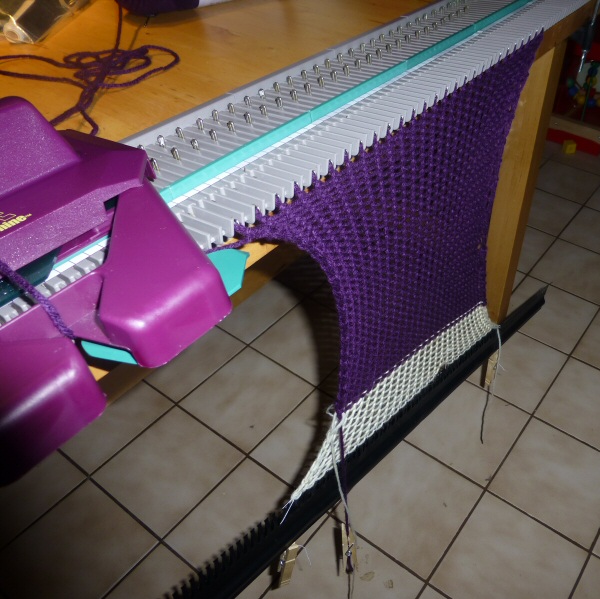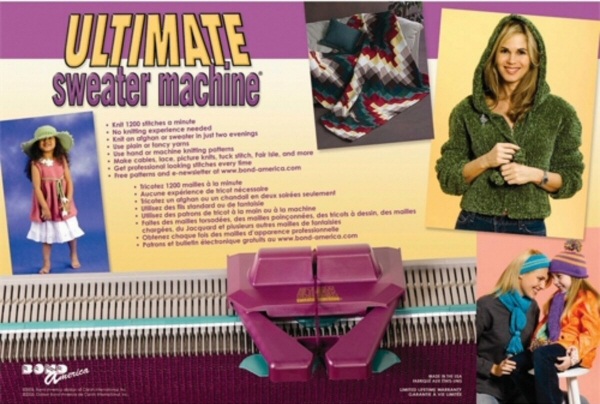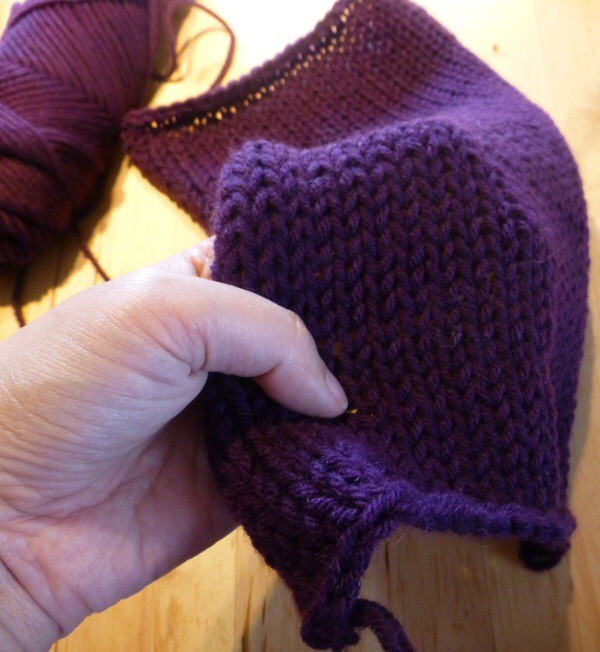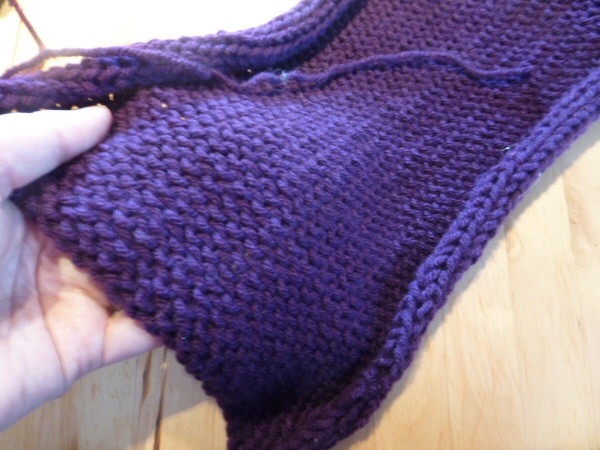

My husband & children got me the USM (Ultimate Sweater Machine) by Bond America for my birthday this year. I have been researching and going back & forth as to whether or not to buy this tool for a couple years now. During a recent trip to Vermont, my husband, armed with a Michael’s 40% off one item coupon was determined to get me one. He found it at AC Moore, and did you know they will accept Michael’s coupons?? I’m so glad he inquired because Michael’s wasn’t carrying it and AC Moore had no great coupons that week.

The USM is a hobby knitting board, that is mostly made of plastic, which I admit was a turn-off for me at first, but you can’t deny that it’s affordable. I wanted a way to use up some yarn I’ve had laying around for quite some time that is perfectly fine but not all that exciting to me for hand knitting. I figured a knitting machine would help me make some simple projects in minutes thus helping me diminish the stash more quickly. The USM basically comprises of a plastic board with metal needles, a plastic carriage with 4 different keyplates for different sizes of yarn, clamps for attaching it to a table & a weighted hem. It also comes with an instructional DVD and pattern book, practice skein of yarn, as well as a few other small accessories like wax, hooks, etc. Some assembly is required but it is relatively quick and straight forward.
Here’s some tips beyond those mentioned in the DVD that I found helped me:
– After getting the board set up, do watch not only the DVD included but any and all videos you can find on YouTube. I find that watching how different people do the same activity helps me decide the best approach for me. This is actually how I learned to knit and crochet by hand. On Bond America’s YouTube channel, they have some really informative videos by expert knitter Vicki Howell. Her videos ultimately led me to success using the USM, as well helped me develop my own approach to learning, which I think is the key to anyone’s success.
– The cast on, followed by the first several rows, is the hardest. I found using waste yarn (WY) really helped, as I did not have to worry so much for these rows to be perfect. I also found casting-on with the needles completely pushed in, as Vicki Howell explains in her Tips for Casting on and First Row video way easier than lining it up the way indicated in the instructions.
– You will hear this over and over, but the right kind of table is key. Flat, solid surface with no lip or rounded edges. The USM does come with a non-slip mat for use with incompatible tables temporarily, but you will thank yourself to have the board securely anchored. Nothing like the board flipping forward or sliding away from you when you are trying to master the movement.
– Wax the keyplate really well. Like redundantly well, at least in the beginning. It says to only wax these 2 raised diagonal center pieces but once I waxed all raised middle pieces I found the cartridge would slide like butter.
– Before casting on, do run your finger across the hem to make sure it is snugly against the board and not in the way of your cartridge. Many times that I could not get the cartridge to glide along smoothly was simply because the hem was in the way.

– You don’t want to press down with a lot of pressure on the cartridge. Gliding it across the board is a firm, steady motion and many times you can slide it along with very little to no pressure whatsoever. I found concentrating the weight of the tips of my fingers toward the back of the cartridge helped, with the grip itself very light. It takes a bit to get the even pressure needed from start to finish. I found it really easy to drop stitches if I didn’t get firm, steady pressure from one end to the other.
– If you find like I did that you struggle with using every needle, try every other needle or even every second needle to start. As soon as I spaced out the needles I found I was gliding along smoothly. It was also very easy to see where I dropped stitches, usually consistently in the same place row after row, so then I knew where I would have to work on applying even pressure in these areas. Now that I have a feel for the USM, I have no problem using every needle and rarely drop a stitch.
– Work on a small area, with just a few needles rather than trying to use the whole board at first (ask me how I know this? ;)).
– Do use the yarn that comes in with the USM for practice. I have yet to try handspun on the USM but it seems that any smooth yarn will work. I think it would easily snag on bumpy or frilly yarns, like a bouclé, and definitely would not take any yarn with inclusions.
Once you get the hang of it and start knitting rows in seconds, you kind of get a little giddy, and the possibilities start racing in your head. I would never give up hand knitting, as it is a process that I enjoy, but hey, if you want the satisfaction of a quick project, I can see how this would become very addictive.

I found the tips on the DVD incredibly helpful and have not included them all here. But all in all, despite a small learning curve, I am impressed with what this little hobby board can do. I look forward to trying handspun on it, and I’ll report my success (or failure) on that in a later post.

Do you have a Bond USM or thinking of buying one? Questions, comments or tips? I’d love to hear from you…leave a message in the comments. 🙂
